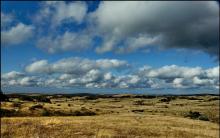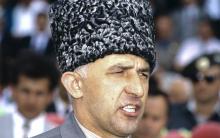Is a computer application that can identify or verify a person from a digital image or video. One way to do this is to compare selected facial features with an image and options from a database.
Facial recognition (software) is commonly used in security systems, and can be compared to other biometric systems (eg fingerprint or eye recognition). Recently, it has also become popular as a commercial identification and advertising tool.
Some facial recognition algorithms identify facial features by extracting landmarks or objects from an image of the subject's face. For example, the algorithm may analyze the relative position, size and/or shape of the eyes, nose, cheekbones and jaw. This data is then used to find other images with matching parameters. Other algorithms normalize a gallery of facial images and then compress the facial information, retaining only the data in the image that is useful for facial recognition. The searched image is then compared with the available data. One of the earliest successful systems is based on template matching techniques applied to a set of characteristic facial features, providing a kind of compressed representation of appearance.

How does facial recognition software work?
It includes certain algorithms that can be divided into two main approaches:
- Geometric, which considers the distinctive or photometric features of the face.
- Statistical, which translates an image into values and compares them to patterns to eliminate variances.
3D recognition
A new trend created to achieve higher accuracy is 3D facial recognition. This method uses 3D sensors to collect information about the shape of the face. This information is then used to identify distinctive features such as the outline of the eye sockets, nose and chin.

One of the advantages of 3D facial recognition programs is that they are not affected by changes in lighting, unlike other options. This technology can also identify from a different range of viewing angles, including profile views. 3D data points significantly improve facial recognition accuracy. 3D research is being enhanced by the development of sophisticated sensors that improve the performance of 3D image capture. The sensors work by projecting structured light onto the face. Up to a dozen or more of these image sensors can be placed on a single CMOS chip - each capturing a different part of the spectrum.
However, even a perfect 3D matching method can be sensitive to facial expressions. For this purpose, a team of researchers at Technion applied tools from metric geometry to treat expressions as isometries. Vision Access then created its 3D facial recognition solution. The company was later acquired by Bioscrypt Inc., which developed a version of human facial recognition software known as 3D FastPass.

The new method is to introduce a way to capture 3D images using three tracking cameras that point at different angles. One of them will point to the front side of the object, the second - from the side, the third - at an angle. They will all work together to be able to track the subject's face in real time and be able to identify it. It is believed that any program for facial recognition through a camera will soon be based on this technology.
Skin Texture Analysis
Another new trend uses visual skin detail that is captured in standard digital or scanned images. This technique, called skin texture analysis, turns the unique lines, patterns and spots visible in a person's skin into a mathematical space.

Tests have shown that with the addition of this technology, facial recognition efficiency can increase by 20-25%.
Thermal chambers
Another form of receiving facial recognition input is through the use of thermal imaging cameras. Thanks to this procedure, cameras will only detect the shape of the head, and will ignore objects such as glasses, hats or makeup. The problem with using thermal images for facial recognition is that the databases for it are limited.
Researchers are currently studying the use of this technology in real life and operational landscapes and at the same time creating a new database of thermal imaging images. The study uses low-sensitivity, low-resolution ferroelectric electrical sensors that are capable of long-wave thermal infrared (LWIR) imaging. The results show that fusion of LWIR and conventional imaging cameras has great results in outdoor probes. This combination can power a very powerful facial recognition program for the camera.

Mass use
While researchers are working on the latest technologies available only to specialists, developers of mass applications are also not standing still. After the creation of Google Glass was announced, there was a lot of noise around facial recognition and programs for this on the Internet. It is believed that this will open up a lot of opportunities for users not only to interact with each other, but also with various objects.
Today there is a large list of facial recognition interfaces available that you can use for your applications. The most common are the following.
Face Recognition Stephen
A development from Lambda Labs, which provides facial recognition based on the location of the eyes, the shape of the nose and mouth, and also carries out gender classification. Available on the developer's official website.
Face Detection
An online facial recognition computer program that is an ideal replacement for Face.com. Currently available free of charge.
Animetrics Face Recognition
The Animetrics Face Recognition API can be used to detect faces in photos. Information about facial features or landmarks is returned as coordinates in the image.

Skybiometry
To use it, you must have an application created in your SkyBiometry account. To create it, a simple registration is enough.
Face++
This application uses advanced technology and to provide 3 main services (detection, recognition and analysis). The program provides detection and analysis of Landmark (23 points), Landmark (81 points), attributes: age, gender, glasses, race and so on.
FaceMark
It is a powerful facial recognition API. It finds 68 landmark points for the frontal face image and 35 for the profile one. FaceMark detects facial landmarks in an image specified by a URL or in an uploaded file, and produces the result as a JSON file containing a vector of facial landmarks and match points for each match found.
EmoVu by Eyeris
Intelligent emotion recognition software that allows cameras to read human micro-expressions, gender and age group. It is a real-time facial recognition program that works when users watch videos on their computers or mobile devices.
Rekognition.com
This is one of the best alternatives to Face.com. The fast, reliable and scalable rekognition engine can perform face detection, scanning, recognition and search. It can be automatically trained using images and tags on Facebook. Since it is social media oriented, it is the best facial recognition software for Android.
FaceRect
It is also a powerful and free face detection interface. It finds faces (both frontal and profile) in an image specified by URL or uploaded as a file, and can find multiple faces in a single photo, and outputs a response in JSON format. This loads the image with a bounding box for each face found.











The most beautiful motorcycles in the world
Which sea is the cleanest in the world?
Top 10 Most Expensive Furs
The largest and most luxurious casinos in the world
Knightly orders of Europe XI - XIII centuries